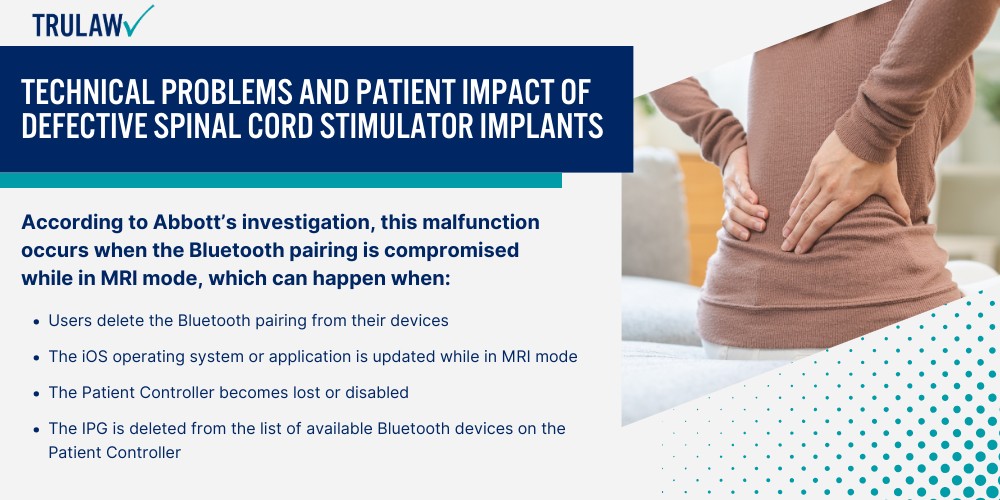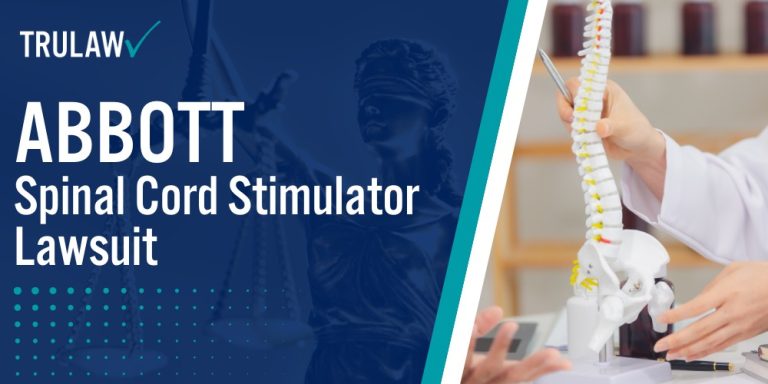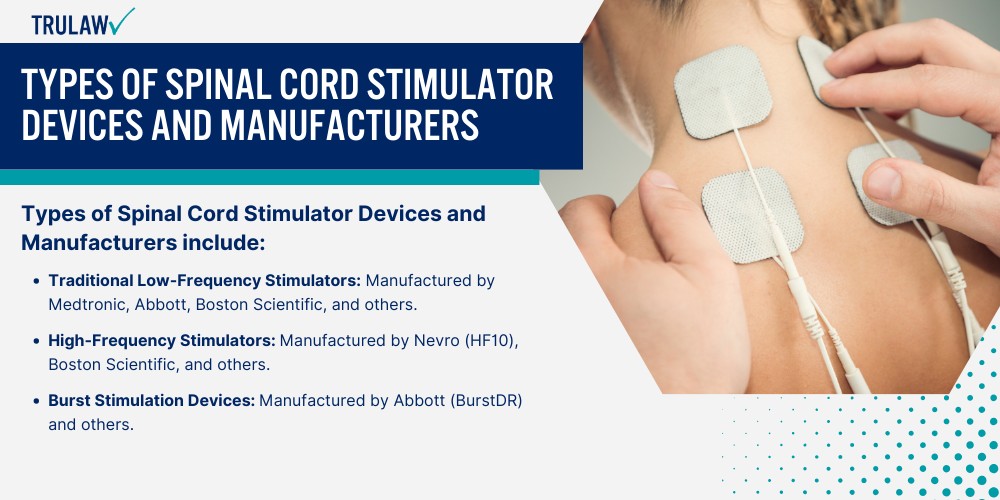Abbott’s spinal cord stimulator systems are used to manage chronic pain and movement disorders through low-intensity electrical impulses delivered to nerve structures.
A technical flaw has emerged related to the MRI compatibility feature, causing patients to lose therapeutic benefits and potentially requiring invasive surgical intervention to restore functionality.

MRI Mode Malfunction Mechanism
The core issue affects the Bluetooth communication pathway between the implantable pulse generator (IPG) and the Patient Controller device (a paired iPhone).
When patients activate MRI mode before undergoing magnetic resonance imaging, therapy delivery is temporarily disabled for safety reasons.
The system may become permanently locked in this disabled state under certain conditions.
According to Abbott’s investigation, this malfunction occurs when the Bluetooth pairing is compromised while in MRI mode, which can happen when:
- Users delete the Bluetooth pairing from their devices
- The iOS operating system or application is updated while in MRI mode
- The Patient Controller becomes lost or disabled
- The IPG is deleted from the list of available Bluetooth devices on the Patient Controller
Once this connection is broken while in MRI mode, the patient cannot reactivate their therapy.
Documented Injuries and Surgery Requirements
The FDA reports that Abbott has received 186 complaints about the MRI mode issue, with 73 documented injuries.
While no deaths have occurred, the consequences can be severe.
When a device becomes locked in MRI mode with no ability to restore function, patients require additional surgery to replace the entire implantable pulse generator to restore their therapy.
These surgical interventions carry their own risks, with the FDA noting that certain subpopulations, particularly those with Parkinson’s disease and movement disorders receiving Deep Brain Stimulation (DBS) treatment, face “higher morbidity and mortality with every surgery, thus otherwise unneeded anesthesia events and surgeries pose an increased hazard.”
This sudden loss of therapy can impact the quality of life and pain management for patients who rely on continuous neurostimulation interrupting pain signals.






